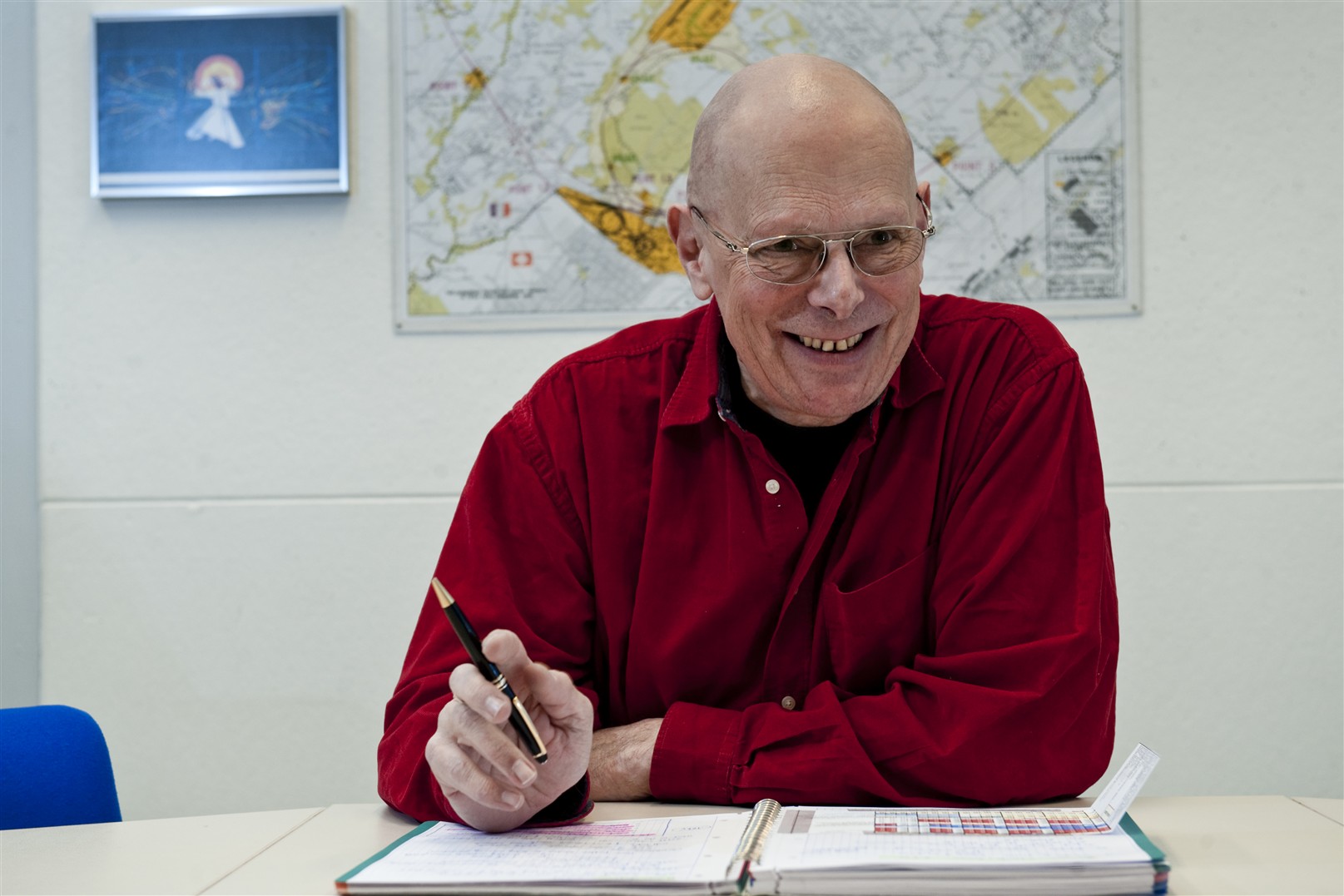Vincent Vuillemin: Consolidating CERN’s technical base
Former head of the Technical Support Department, Vincent Vuillemin is pursuing his mission as the head of the new Engineering Department. The remodelled department is working towards the resumption of LHC operations, on the Laboratory’s numerous projects and consolidation of the existing facilities.

Vincent Vuillemin studies the table spread out on his broad office desk, showing his department’s projects. Red shows top-priority projects, blue is for projects under development and yellow is for future projects. Of course, the top red slot is reserved for the LHC. "Getting the LHC back into service is our absolute top priority," states Vuillemin. Whenever a technical difficulty arose with the LHC project—from defects in the cryogenic distribution line to the manufacturing problems that affected the collimators—the teams of the Technical Support Department (TS), now the Engineering Department (EN), were at the forefront, making use of their technical expertise and practical experience to solve the problems. With the incident in Sector 3-4 of the LHC, the EN Department, like the other technical departments, found itself back in the fray. "I am full of admiration for the way the CERN staff, especially the people in the technical departments, threw themselves into their work in response to the emergency," observes Vuillemin. "It would have been reasonable to expect a slackening of the pace, but that didn’t happen. People have shown a fantastic level of individual responsibility and motivation, without the need for prompting by their hierarchy."
Along with the other technical departments, the EN Department has thus taken up the new challenge of getting the LHC back into operation in the autumn. At the same time, the boundaries of the Department’s responsibilities have been redefined, although the tasks remain essentially the same. With its staff of 380, the unit is responsible for providing technical and engineering support to CERN, especially the accelerators and experiments. While the mission is the same, some of the groups involved in the site infrastructure, such as access, have been moved to the new General Infrastructure Services (GS) Department. Conversely, other activities have joined the EN Department, such as beam dumps, collimators and targets for the experiments. EN is also responsible for accelerator shutdown operations. All these activities have been brought together to enhance synergies. "The various accelerators have different operating schedules, and that allows us, for example, to distribute the resources better as a function of the scheduled shutdowns," explains Vuillemin.
In his view, one of the major improvements in the new organisational structure is that the three technical departments have been brought together in one sector under the Director for Accelerators and Technology, Steve Myers. "I have regular meetings with Steve Myers and the heads of the Technology and Beams Departments, which fosters communication between the teams so that we can solve problems together and improve the synergies," he notes. "That is a big advantage."
Looking beyond the re-startup of the LHC, the Department is preparing for a historically long run of 12 months. Vuillemin explains: "Our main task during the operating phase is to ensure that accelerator ancillary systems function properly: for example, the electrical power supply system and the ventilation." During the years that the LHC was being constructed, many of these systems suffered from neglect. "We will need to perform some consolidation work immediately, along with preventive maintenance to make sure we can operate for 12 months," he notes. Last year, the Department produced a risk study to evaluate the most urgent consolidation work, as a function of the risk involved.
The Department is also involved in providing support to all the other projects shown red, blue and yellow in Vuillemin’s table: the new linear accelerator Linac 4, new focusing magnets for the LHC second phase, all the big fixed-target experiment programmes, replacement studies for the PS and the linear collider CLIC, and so on. The Department is also awaiting the definition of a physics programme that is expected to emerge from a workshop entitled "New Opportunities in the Physics Landscape at CERN", to be held from 11 to 13 May 2009. "However, we will have to weigh the plans against the available resources," cautions Vuillemin. "We have to give priority to approved projects and ongoing experiments."
At the top of his wish-list for the future of the Department is the modernisation of the facilities. "What I really hope is that CERN will have sufficient consolidation budget resources available. The facilities are old and pose many maintenance problems," he explains. "This situation is costing us a lot of money." Vincent Vuillemin considers that facility renovation will be indispensable if new projects are to be undertaken. Another concern is about the engineering teams, which are still too scattered across the Laboratory, and could be integrated within the EN Department.
Vincent Vuillemin concludes the interview by underlining the importance of the human factor, a subject dear to his heart. He confides, "I love my management role because I enjoy meeting people and engaging with them. I am there to foster human relations so that the job gets done."
Vincent Vuillemin’s CV in brief
Vincent Vuillemin has a PhD in applied physics from EPFL Lausanne. He joined CERN as a fellow in 1981. Appointed to the staff in 1983, he worked on the UA1 experiment for six years. He went on to take part in research and development projects that laid the groundwork for the big LHC experiments. In 1994, he joined the new ATLAS collaboration, where he held various positions until 2001.
That year he was appointed Deputy Director of the Experimental Physics Division, before joining the Technical Support (TS) Department in 2004 as head of the Mechanical and Materials Engineering (MME) Group. Since 2007 he has been at the helm of the TS Department, which became the Engineering (EN) Department on 1 January 2009.

